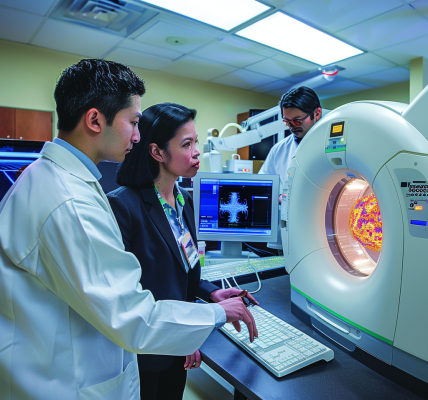Rice University Scientists Develop Noninvasive Method to Monitor Gene Expression in the Brain
This week, Rice University scientists have made a groundbreaking development in the study of gene expression in the brain. Their research, published in Nature Biotechnology, introduces a noninvasive method to monitor gene expression dynamics in the brain through a simple blood test, providing a new avenue for investigating brain development, cognitive function, and neurological diseases.
The brain, being the most protected organ in the body, presents a challenge for researchers due to its complex and nearly impenetrable barrier of specialized blood vessels. This anatomical setup, while protective, has made it difficult to study specific gene expression and its potential link to diseases.
Rice bioengineer Jerzy Szablowski and his team have engineered a unique class of molecules, referred to as released markers of activity (RMAs), which can be utilized to measure gene expression in the brain through a simple blood test. This method offers a significant advancement over traditional post-mortem analysis and existing neuroimaging techniques, which lack the sensitivity and specificity required to track changes in specific cell types.
Szablowski explained the concept behind the synthetic gene expression reporter, stating, ‘With the RMA platform, we can introduce a synthetic gene expression reporter to the brain, which produces a protein that can pass through the blood-brain barrier. We can then measure changes in expression for a gene of interest with a simple blood test.’
The development of the synthetic gene expression reporter stemmed from the observation that antibody therapy injections quickly cleared from the brain. Szablowski elaborated on this, saying, ‘We thought the failure of antibody therapies could be repurposed to our advantage. What if we took the part of the antibody responsible for this escape and attached it to a protein that could be easily detected? We could then see where, when and how much of a particular gene was being expressed in the brain.’
This innovative approach opens up new possibilities for understanding gene expression in the brain and its implications for neurological disorders. The ability to noninvasively monitor gene expression dynamics in the brain could revolutionize the field of neuroscience and lead to significant advancements in the diagnosis and treatment of neurological conditions.
As the scientific community continues to explore the potential applications of this groundbreaking research, the implications for brain research and neurological disease treatment are vast and promising.





